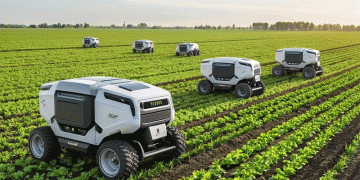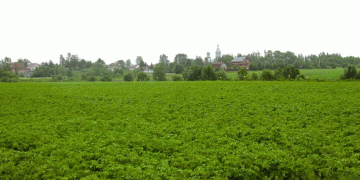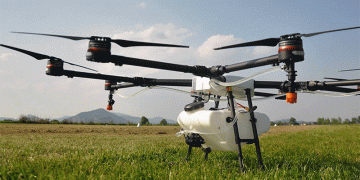In Tiền Giang province’s Châu Thành district, vegetable farming has become a lifeline for many rural families, leading them to better financial stability and improved living conditions. The district has established specialized vegetable farming zones that cater to the unique soil conditions of each area. Leafy vegetables such as pennywort, cilantro, and mint thrive in regions like Tam Hiệp, Tân Lý Đông, and Thạnh Phú, while fruiting vegetables like cucumbers, bitter melons, and tomatoes are grown in Tân Hội Đông, Tân Hương, and Thân Cửu Nghĩa.
Farmers like Mr. Đỗ Văn Hậu, who lives in Thân Cửu Nghĩa, have turned their focus to cultivating cilantro (ngò om), a herb that has proven to be highly profitable. Mr. Hậu manages over 15,000 square meters of cilantro, selling it to local traders for around 6,000 VND per kilogram. After accounting for production costs, he enjoys a profit margin of approximately 30%. Cilantro is relatively easy to grow, requiring minimal effort and a low initial investment. Moreover, its quick harvest cycle, which occurs every 2.5 months, makes it a much more lucrative option compared to traditional rice farming, with earnings that are three times higher.
Mr. Trần Văn Nam, another farmer from Thân Cửu Nghĩa, was inspired by his neighbors’ success with cilantro. In early 2020, he decided to try it himself, initially planting small patches in his garden. Seeing favorable results, he quickly expanded his cultivation area. Now, like Mr. Hậu, he is harvesting cilantro every few months from his 15,000-square-meter plot. Mr. Nam highlights the simplicity of growing cilantro, as it suppresses weed growth naturally, reducing the need for herbicides and pesticides, which in turn boosts profitability.
Additionally, Mr. Nam has diversified by growing pennywort, another low-maintenance vegetable. Pennywort requires little fertilizer, and its ability to outcompete weeds means farmers spend less on chemicals, further increasing their profits. Over time, Mr. Nam’s vegetable farming has provided him with enough income to build a modern home and ensure his children receive a proper education.
To reduce production costs and increase efficiency, Mr. Nam also uses a smaller plot of 500 square meters near his house to grow cilantro seedlings. By producing his own seedlings, he can meet his planting needs while saving money on buying from outside sources. This self-sufficiency increases the overall profitability of his vegetable farming.
Châu Thành district’s farmers have collectively benefited from this shift to vegetable farming. By focusing on crops that suit local soil and climate conditions, they have managed to cultivate profitable vegetables with relatively low input costs. The success of farmers like Mr. Hậu and Mr. Nam illustrates how adopting the right crops and farming techniques can lead to significant financial improvements. Vegetable farming in this region is no longer just about subsistence—it is a path to economic growth and better living standards.
The success of farmers in Tiền Giang’s Châu Thành district demonstrates the economic potential of vegetable farming, particularly when combined with localized farming knowledge and strategic crop choices. By switching from traditional crops like rice to high-value vegetables like cilantro and pennywort, these farmers have managed to lift themselves out of poverty and achieve financial independence. As more farmers adopt these practices, vegetable farming will continue to play a crucial role in rural economic development.

































